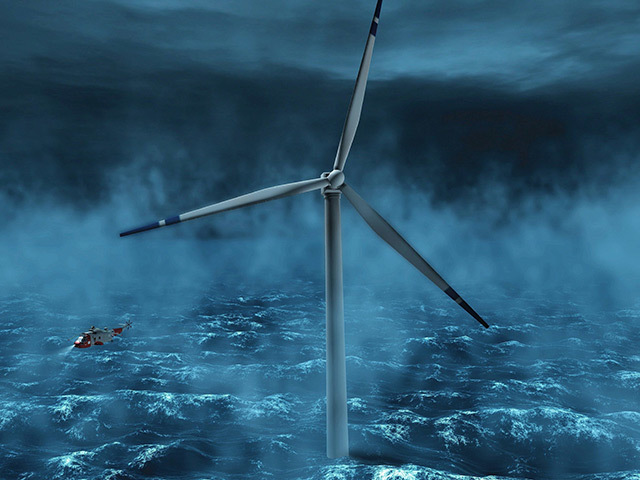
Energy giant Statoil is to build Europe’s biggest floating windfarm off the coast of Peterhead.
The company and the Crown Estate have struck a lease deal to put five turbines at a site called Buchan Deep, 12 miles offshore.
The masts will sit in water that is more than 300ft deep and will be capable of powering up to 20,000 homes.
Last night, industry leaders and politicians claimed the project – which will also be one of the largest floating wind schemes in the world – would make Scotland a world leader in offshore wind.
The company will need consent from the Scottish Government before work can start, but Finance Secretary John Swinney appears already to be backing the plans. “Scotland has a huge offshore wind resource but to maximise this opportunity we need to move into deeper water,” he said.
“The lease agreement awarded to Statoil’s Hywind project offers the first step towards harnessing this resource.”
Firms are looking for cheaper solutions for offshore wind amid warnings that some schemes will not go ahead unless subsidies are increased.
However, floating technology makes it possible to exploit sites in waters too deep for conventional offshore turbines to be installed, therefore cutting costs.
The Peterhead turbines would be connected to the National Grid – but the windfarm’s main role would be to test the latest innovations in turbine design with a view to helping the company bring down costs and create an economically viable scheme.
Buchan Deep would be the latest phase of Statoil’s Hywind project, which led to the world’s first full-scale floating turbine being installed off the coast of Norway in 2009.
Statoil’s senior vice-president for renewable energy, Siri Espedal Kindem, said: “This is a significant milestone for the Hywind Scotland Pilot Park.
“It represents a new step in the development towards a future, floating, commercial-scale park.
“We look forward to a progressed dialogue with key stakeholders in Scotland including communities, the local supply chain and the authorities.”
The site at Buchan Deep would also play an important role in demonstrating that the technology could operate as part of an array as well as showing how knowledge, gleaned from Hywind’s first stage, has been incorporated into the latest designs.
Banffshire and Buchan Coast MSP Stewart Stevenson has welcomed the windfarm plans.
He said that the structures will bring an economic boost to his constituency.
He said: “Renewables technology will be an important cornerstone to Scotland’s future economy and it is no surprise that Peterhead has been chosen to be one of the key locations in that development.
“Peterhead’s deep-water harbour makes it an ideal location for the offshore renewables industry.
“The town’s designation as a strategic hub for offshore renewables will no doubt have been a key factor in Statoil’s decision.”
Local councillors also backed the plans, but said they hoped any potential impact on fishing or vessel traffic would be mitigated.
Peterhead South Cruden councillor Stephen Smith said: “Provided this can be done safely and securely and without any detriment to vessels or fishing, I would generally always favour offshore turbines over onshore ones.”
Peterhead North Rattray member Fiona McRae added: “The principle of offshore wind power is one which I support.
“The huge advances in technology mean that the renewables industry is constantly changing and adapting and I think offshore wind power will become increasingly important in the future.”
UK Government Energy Minister, Michael Fallon, said: “This innovative project will lead to the construction of the first floating offshore wind farms in the UK.”
Recommended for you
